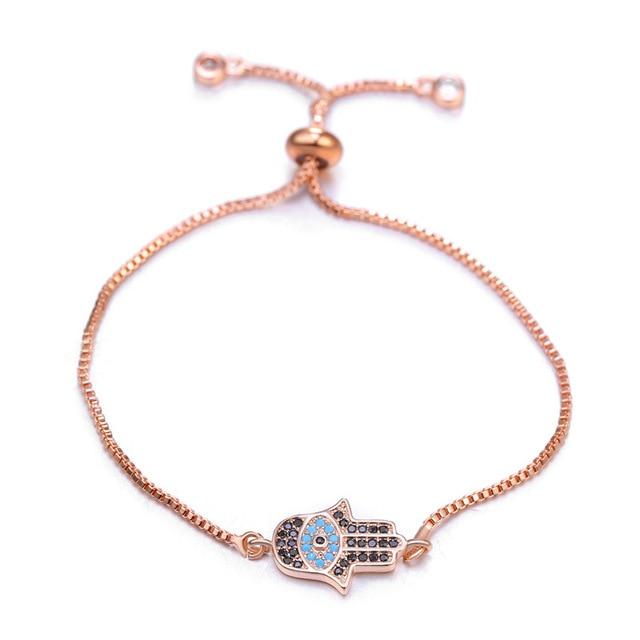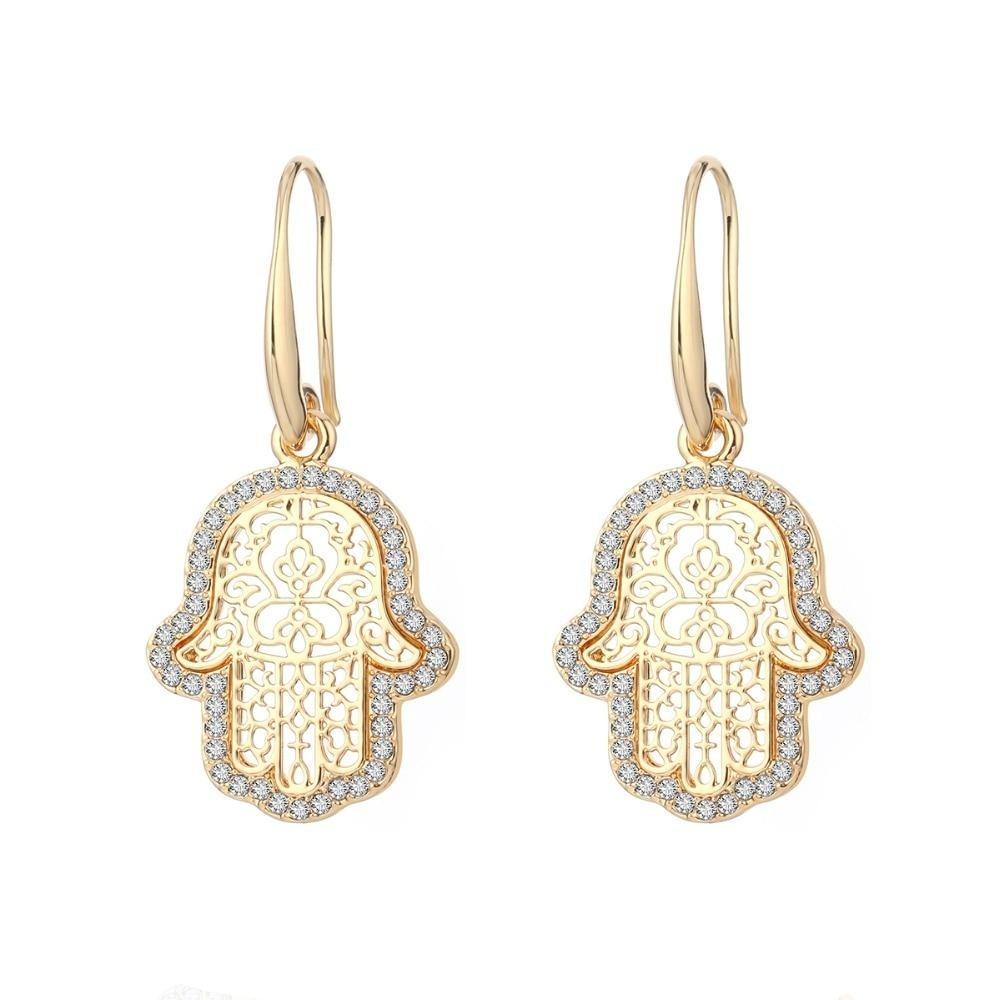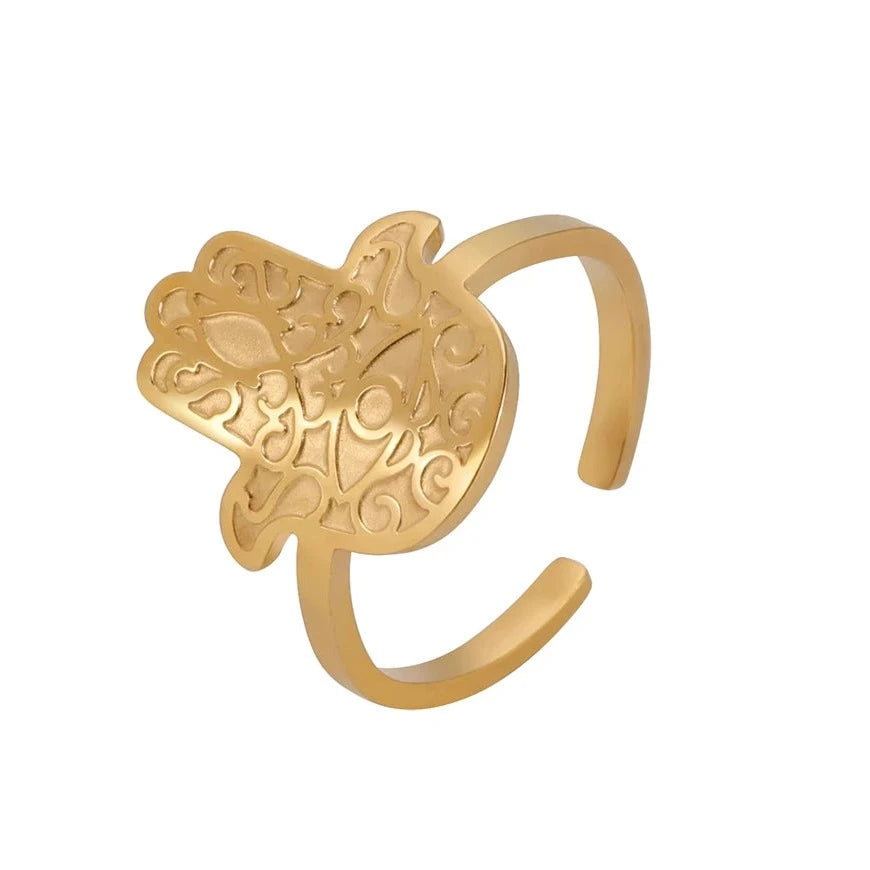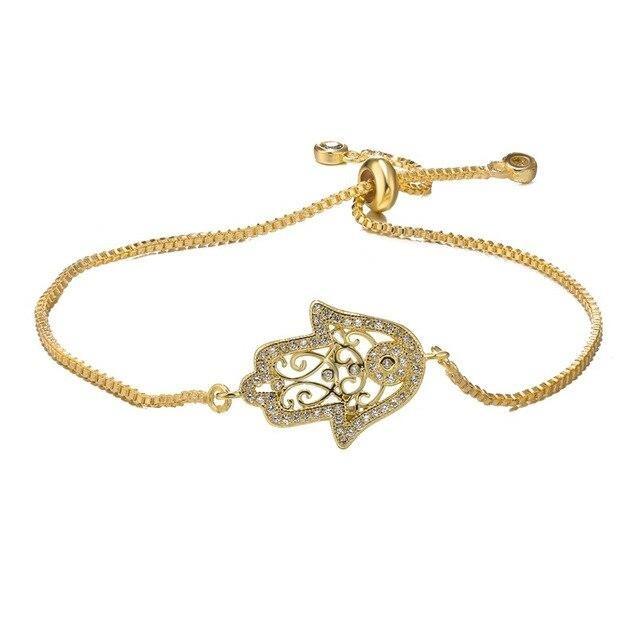The Hamsa: a Lucky Symbol for Muslims
The hamsa is an ancient and mysterious symbol associated with the Muslim religion. It is often found in the homes and shops of Muslims, as it is believed to repel jinn and the evil eye. Thus, this powerful symbol is believed to protect us against bad luck.
Muslims further believe that the hamsa has supernatural powers and is capable of guiding believers to the right path.
But actually, where do these beliefs come from?
Contents :
The hamsa: lucky hand of Muslims
The hand of Fatma: legend of the prophet's daughter

The hamsa: lucky hand of Muslims
The hamsa is the famous lucky hand of Muslims. She is often depicted with five fingers, but can have six or seven fingers.
In Islam, many believe that the hamsa protects against the evil eye and brings good fortune.
This hand is often hung from a door or a passageway, so that evil spirits cannot enter.
Sometimes, Muslims also wear amulets and other jewelry showing the hamsa around their necks or on their clothes.

The hand of Fatima: legend of the prophet's daughter
The legend of the Hand of Fatima is a story that dates back to the 7th century. According to legend, Fatima was the daughter of the Prophet Muhammad. One day the Prophet had a vision in which he saw Fatima holding a fish in her hand. The fish was struggling and Fatima was unable to hold it. The prophet then understood that this vision meant that his daughter would die young.
Fatima died shortly after having this vision, at the age of 18. Since then, the legend of the hand of Fatima has been associated with the premature death of young girls. Legend has it that parents must engrave an image of the hand of Fatima on their daughter's grave so that she can rest in peace.
The legend of the Hand of Fatima is an example of the power of symbols in cultures around the world. Symbols can be interpreted differently in different cultures, but they all have deep meaning and can help us understand the stories and myths around us.

Myriam's hand: a Jewish story
Myriam, a young Jewish woman, lives in Israel. She has a husband and two children. Her life is peaceful until the day she discovers that she has cancer. Doctors tell her she only has a few months to live. Myriam then decides to take advantage of every moment and do everything she didn't have time to do.
She begins by learning to dance salsa. This allows him to let off steam and forget his worries. Then, she took a trip to Burma, where she helped Rohingya refugees. Finally, she returns to her hometown, Jerusalem, to reconnect with her Jewish roots.
During her trip, Myriam meets many interesting people and even though she knows that her cancer is incurable, she does not give up and continues to enjoy life."

Wear the hamsa to protect yourself from the evil eye
The evil eye is a form of curse that can be cast unintentionally by someone who envies the success or good fortune of others. It is believed that the evil eye can lead to illness, accidents and even death. Fortunately, there are many ways to protect yourself from the evil eye.
Wearing a hamsa is one of the best ways to protect yourself from the evil eye. The hamsa is a very powerful symbol which represents divine protection. Therefore, wearing this Muslim jewelry is a great option if you have been struck by bad luck for some time.
It is a powerful and sacred symbol that can help you ward off evil and attract luck and prosperity into your life.

The style of “hamsa” jewelry for women
One of the most popular styles of women's jewelry in recent years is the "hamsa" style. The hamsa is a protective hand used in many Middle Eastern and North African cultures.
This will seem obvious given the previous points in this article: women often wear this symbol as a talisman, because it is supposed to repel evil spirits and bring good luck.
The style of “hamsa” jewelry for women is generally very colorful and ornate. Bracelets, necklaces and earrings are frequently made of silver or gold with precious or semi-precious stones encrusted. The designs on “hamsa” jewelry can be very varied, but they all have deep symbolism behind them.
“Hamsa” jewelry is a great choice for those looking to add an exotic touch to their look. They are also perfect if you want to wear something unique and meaningful.
Lucky charm featured in this article

Bracelet of the Hand of Fatma in Mosaic
See more
Earrings of the Hands of Fatma Set
See more
Oriental Ring of the Hand of Fatma
See more
Bracelet of the Hand of Fatma in Arabesque
See more
Short Necklace of the Hand of Fatma
See more
